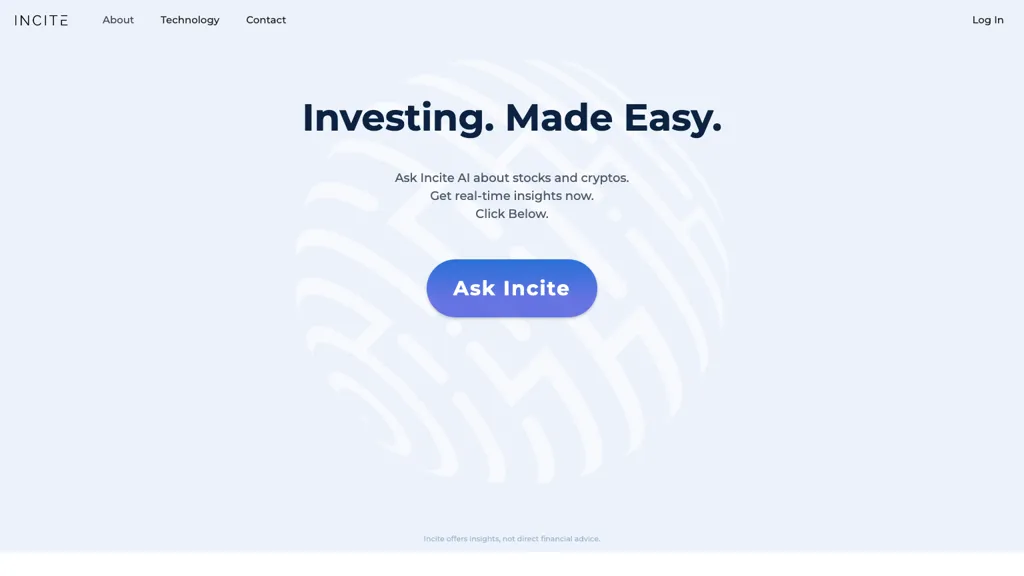Top 10 Tips To Evaluate Ai And Machine Learning Models Used By Ai Stock Predicting/Analyzing Trading Platforms
In order to ensure that you have accuracy, reliability, and actionable insights, it is crucial to examine the AI and machine-learning (ML) models utilized by trading and prediction platforms. Models that are poorly designed or overhyped could result in inaccurate forecasts as well as financial loss. These are the top 10 guidelines to evaluate the AI/ML models used by these platforms:
1. Find out the intent and method of this model
Clarity of goal: Decide if this model is intended for short-term trading or long-term investment and sentiment analysis, risk management etc.
Algorithm transparency: See if the platform discloses the types of algorithms utilized (e.g., regression and neural networks, decision trees and reinforcement learning).
Customizability: Determine if the model can adapt to your specific trading strategy or your tolerance to risk.
2. Evaluation of Performance Metrics for Models
Accuracy Test the accuracy of the model's predictions. Don't solely rely on this measure, but it could be inaccurate.
Accuracy and recall. Evaluate whether the model is able to accurately predict price changes and reduces false positives.
Results adjusted for risk: Examine the impact of model predictions on profitable trading in the face of the accounting risk (e.g. Sharpe, Sortino, etc.).
3. Test your model with backtesting
Performance historical Test the model by using historical data to determine how it will perform in previous market conditions.
Test the model on data that it hasn't been taught on. This can help prevent overfitting.
Scenario Analysis: Review the model's performance under different market conditions.
4. Check for Overfitting
Overfitting Signs: Search for models which perform exceptionally well when trained but poorly when using untrained data.
Regularization methods: Check the application uses techniques like L1/L2 regularization or dropout in order to prevent overfitting.
Cross-validation: Make sure that the platform uses cross-validation to assess the model's generalizability.
5. Review Feature Engineering
Relevant features: Check if the model uses relevant features (e.g., volume, price emotional indicators, sentiment data macroeconomic variables).
Feature selection: You should make sure that the platform is selecting features with statistical importance and avoiding redundant or unnecessary information.
Dynamic feature updates: Determine that the model can be adapted to new characteristics or market conditions in the course of time.
6. Evaluate Model Explainability
Model Interpretability: The model needs to be able to provide clear explanations for its predictions.
Black-box Models: Be cautious when you see platforms that use complicated models with no explanation tools (e.g. Deep Neural Networks).
A user-friendly experience: See whether the platform provides relevant information for traders in a way that they understand.
7. Examine Model Adaptability
Market conditions change - Check that the model is modified to reflect changing market conditions.
Continuous learning: Verify that the platform is regularly updating the model with fresh data in order to improve performance.
Feedback loops. Make sure you include the feedback of users or actual results into the model to improve it.
8. Check for Bias and Fairness
Data biases: Ensure that the data for training are representative and free from biases.
Model bias: Find out if you are able to actively detect and reduce biases that are present in the forecasts of the model.
Fairness: Ensure that the model doesn't disadvantage or favor specific sectors, stocks or trading techniques.
9. Calculate Computational Efficient
Speed: Determine the speed of your model. to generate predictions in real time or with minimum delay particularly for high-frequency trading.
Scalability Check the platform's capability to handle large data sets and multiple users without performance loss.
Utilization of resources: Check to determine if your model has been optimized for efficient computing resources (e.g. GPU/TPU usage).
Review Transparency and Accountability
Model documentation: Ensure that the platform provides detailed documentation about the model's structure as well as its training process, as well as the limitations.
Third-party Audits: Determine if the model has been independently audited or validated by third organizations.
Error handling: Verify if the platform has mechanisms to detect and fix models that have failed or are flawed.
Bonus Tips
User reviews Conduct user research and research case studies to determine the effectiveness of a model in the real world.
Trial period: Test the model for free to determine the accuracy of it and how simple it is to use.
Support for customers: Ensure that the platform provides an extensive customer service to assist you solve any product-related or technical issues.
These tips will help you examine the AI and machine-learning models used by stock prediction platforms to ensure they are reliable, transparent and in line with your goals for trading. See the most popular this site for AI stock picker for site tips including trading ai, ai investing platform, ai chart analysis, ai for stock predictions, AI stock market, stock ai, ai investing app, stock ai, incite, AI stock trading and more.

Top 10 Tips On Assessing The Social And Community Features Of Ai Stock Predicting/Analyzing Trading Platforms
Analyzing the community and social aspects of AI-driven stock prediction and trading platforms is vital for understanding how users interact, share insights and gain knowledge from one another. These features can improve the user's experience as well as provide invaluable help. Here are 10 top strategies for evaluating the community and social aspects of these platforms.
1. Active User Group
Tips: Ensure that the platform is active and has users who are regularly involved in discussion, sharing information, or providing feedback.
Why: An actively-active community is an indication of a community that allows members to learn and grow from one another.
2. Discussion forums and boards
You can evaluate the quality of an online discussion forum or message board by looking at its activity levels.
Why: Forums enable users to discuss market trends or ask questions, and also exchange strategies.
3. Social Media Integration
TIP: Find out if the platform is linked to social media channels for sharing insights and updates (e.g. Twitter, LinkedIn).
Why: Integration of social media can improve the level of engagement and also provide market updates in real-time.
4. User-generated Content
Tip: Look for features that allow users to make and distribute content, such as articles, blogs, or trading strategies.
Why? User-generated content fosters collaboration and provides a variety of perspectives.
5. Expert Contributions
Find out if experts from the field such as market analysts or AI experts, have contributed to the project.
The reason: Expert insights add credibility and depth to discussions in the community.
6. Real-Time Chat and Messaging
Tip : Assess the available instant chat and messaging options to allow users to chat in real time.
The reason: Real-time communications facilitate quick information exchange and collaboration.
7. Community Moderation and Support
Tip: Determine the level and nature of support provided by your community (e.g. Moderators or representatives for customer service).
The reason: Moderation is essential for maintaining a positive, friendly atmosphere. Support is available to help users resolve their issues as quickly as is possible.
8. Webinars and Events
Tip - Check to see whether the platform allows live Q&A with experts, webinars, and other events.
Why? These events are an excellent opportunity to gain knowledge about the industry and have direct contact with professionals.
9. User Reviews and User Feedback
Tips - Search for features where users can provide feedback on the platform the community, features and other aspects.
What's the reason? User input can help determine strengths and areas to improve.
10. Gamification and Rewards
Tip: Evaluate whether the platform includes gaming elements (e.g. leaderboards, badges) or incentives for participation.
Gamification is a way to encourage community members to be more involved.
Bonus Tip - Security and Privacy
Be sure that all community or other social features include robust security and privacy measures to safeguard users' information and other interactions.
You can look at these factors to determine if you're capable of finding a platform that has a friendly, engaging community and enhances your knowledge and skills in trading. View the top rated moved here for investing with ai for site advice including chart analysis ai, best ai for stock trading, how to use ai for copyright trading, ai share trading, best AI stock prediction, ai copyright signals, AI stock prediction, chart analysis ai, how to use ai for copyright trading, ai investment tools and more.

Comments on “20 Recommended Facts For Picking AI Stock Analysis Platforms”